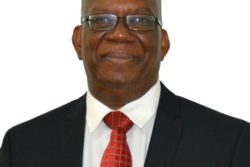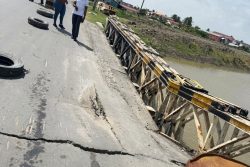(Reuters) – In Ghana and Kenya, insecticide and mosquito nets sit in warehouses because U.S. officials haven’t approved urgent anti-malaria campaigns.
In Haiti, a group treating HIV patients awaits U.S. permission to dispense medicines that prevent mothers from giving the disease to their children.
In Myanmar, where famine looms and the U.S is the single largest aid donor, one humanitarian worker described the situation as “mayhem.”
Nearly three weeks into U.S. President Donald Trump’s sweeping freeze on foreign aid, life-saving programs across the globe remain shut as humanitarian workers struggle to secure U.S. government waivers meant to keep them open, dozens of aid workers and U.N. staff told Reuters.
After Trump announced the 90-day freeze on January 20, U.S. Secretary of State Marco Rubio issued waivers for what he called “life-saving humanitarian assistance,” which included “core life-saving medicine, medical services, food, shelter, and subsistence assistance.”
But aid workers and U.N. officials said the waivers had sparked widespread confusion, along with fears that their U.S. funding would never be restored.
They said they couldn’t restart work without first confirming with their U.S. counterparts whether specific programs qualified for exemption. This was proving nearly impossible, they said, due to a communication breakdown with U.S. officials, some of whom had been fired or barred from talking.
The breakdown appeared partly by design. On January 31, staff at the United States Agency for International Development, once the main delivery mechanism for American largesse, were told not to communicate externally about the waiver and what it may or may not include, according to a previously unreported recording of the meeting reviewed by Reuters.
The U.S. State Department and White House did not respond to requests for comment.
The spiraling consequences of the aid freeze in developing countries underline the real-world harms from Trump’s upending of decades-old U.S. initiatives designed to build global alliances by making America the world’s most generous superpower and largest single aid donor.
Aid workers had a list of urgent questions going unanswered. Among them: Which programs could continue? What qualifies as life-saving aid? Food? Shelter? Medicine? And how do they keep people from dying when almost every aid service has been shut at once?
With little guidance from U.S. officials, aid workers said their organizations erred on the side of caution and closed programs rather than incur expenses that the U.S. government might not reimburse, the aid workers said. Some described how U.S partners – often people they had worked with for years – no longer answered their phones or emails.
One Geneva-based aid official who reached U.S. officials was stunned by their response. “We asked: Can you tell us exactly which programs we need to stop? Then we got a message saying ‘no more guidance is forthcoming’. This leaves us in a situation where you have to make a choice of which program is ‘life-saving’,” the official said. “We don’t have money to pay for it ourselves. We can’t spend money we don’t know if we have.”
The turmoil was particularly acute at USAID, now in disarray and targeted for closure as a “criminal organization” by Trump’s government efficiency tsar, the billionaire Elon Musk.
In his executive order, Trump said the U.S. “foreign aid industry and bureaucracy” were “in many cases antithetical to American values.” He ordered the 90-day pause pending a review on whether aid was consistent with his “America First” foreign policy.
Most of those who spoke to Reuters requested anonymity, fearful of antagonizing the Trump administration and jeopardizing the possible restoration of aid.
Two workers with aid organizations in Myanmar told Reuters they didn’t know whether U.S.-funded food distribution in the country was covered by a waiver and would continue. One of the workers described the situation as “mayhem.” Myanmar faces a severe food crisis due to natural disasters and a spiraling civil war. An estimated two million people in the country are on the brink of famine, according to the U.N.








